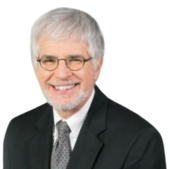
During my years of writing about rock music in the 1970s and 1980s, one of the journalists I most admired was Ken Barnes. So it was a thrill for me in 1998 when our professional lives intersected at USA TODAY. I was a reference librarian, and Ken was hired as music editor. He supervised coverage in the print edition for a decade, and launched the entertainment section’s first online chats and blogs. I enjoyed working with him the entire time, and coincidentally, we both left USAT in December 2008.
Ken’s career began in the early 1970s when he started getting his record reviews published by various publications, and then became a co-editor at one of the most important rock fanzines of the era, Greg Shaw’s Who Put the Bomp. At the same time he was an assistant editor of the Los Angeles-based monthly music magazine Phonograph Record and had freelance pieces published by the likes of Rolling Stone, Playboy, New York Rocker, and Creem.
His says that his interest in charts, dating back to childhood, led to becoming the longtime editor-in-chief of the radio industry trade weekly, Radio & Records, supervising editorial and charts. In 1995, he moved to Seattle as an editor and writer for Microsoft’s website, Music Central, before moving to the DC area three years later to join USA TODAY.
Although he is now retired, he is “attempting to reconcile the various experiences of music fan, industry executive, and journalist to create a wildly over-ambitious and currently unpublished critical compendium of pop history.”
I’m thankful that Ken answered my questions about his career, which spanned so many years of crucial rock history.
Are there particular people in rock music (either artists or those behind the scenes) you interviewed and/or wrote about during your career that you found to be particularly memorable?
I tended to avoid formal artist interviews as soon as I could choose to do so, so most of my encounters with artists were in informal meet-and-greet situations. Among the most memorable of those were Little Richard, Dion, Tori Amos, Michael Stipe, and many more. In more conventional interview situations, I was particularly impressed with the wide-ranging intelligence (and verbosity) of George Clinton and Ian Hunter. I collaborated on a monthly review column with Howard Kaylan and Mark Volman (Turtles, Flo & Eddie), and they were unfailingly sharp and witty.
Your career was built over many years, centered around writing and editing, and focused on rock music. To what extent were your career-related changes during this period intentional, and how much due to chance, serendipity, luck, unexpected changes of circumstances, etc.?
There was a certain degree of determination and desperation involved — find some way of turning avocation into vocation, no Plan B — and I did make some of my own breaks. But once established as a writer/editor, most moves were rooted in contacts with friends I’d met along the way.
There is a massive change in the availability of music, driven by online/streaming, podcasts, videos, etc., that did not exist when you began your career in the early 1970s. Are there underrated or lesser known artists from the 1960s and 1970s, whose music is either being rediscovered/reevaluated now, or should be, in your estimation?
How much space do you have? I started writing about neglected ’60s artists from the very start, and still spend an inordinate amount of time exploring obscurities from the ’50s onward. The growth of fanzines, blogs, and websites and the explosion of availability have greatly improved the situation, so that nowadays virtually any worthwhile act has at least a cult following. A few artists — Jackie DeShannon comes to mind — deserve a more prominent place in music history, and I’d like to see more laurels for Mouse & the Traps.
